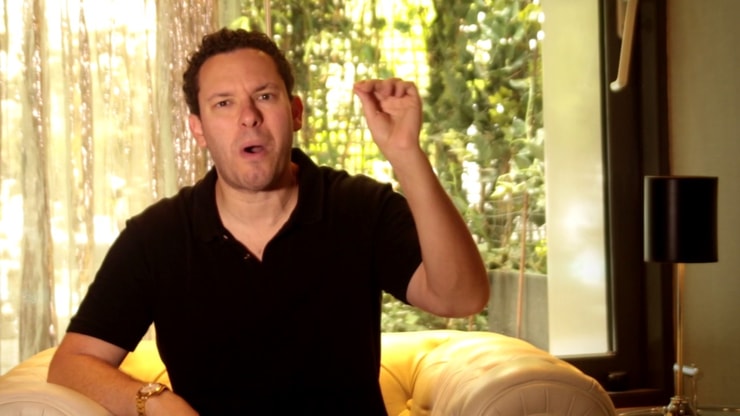Trading binary options can seem deceptively simple, but leaning too far into that notion can blind people to some of the risks that often accompany this type of trading.
Before I go any further, I want to make it clear I’m not a binary options trader. I trade penny stocks and teach day trading. I’d love to see you join the Trading Challenge — it’s the result of over two decades of trading and a decade of teaching. It’s awesome.
If you’re interested in taking the binary options path, it’s critically important to understand exactly what you’re getting into and set appropriate expectations. And you should get a mentor who trades binary options. Seriously. Preparation is key.
Again, I don’t trade binaries. For the most part I think they’re scams. Can you trade them successfully? There are successful traders in every niche. But most traders lose. That’s the reality of the industry.
It doesn’t matter if you’re trading forex, penny stocks, options, big caps, or … binary options. Most traders lose and most trading teachers don’t want you to know about it. So I’m going to tell you about binary options in this post. But I don’t trade them and I don’t recommend it.
Will trading binary options enable you to buy a villa in the South of France next year? Probably not. Will they allow you to quit your full-time job and finally start on that novel you’ve always wanted to write? Don’t count on it.
Here, we’ll take a look at what binary options trading is all about and you can decide whether it’s right for you. As you read, keep in mind that binary options are getting outlawed in more and more countries. Companies are getting shut down. Or they’re based overseas in places where you can’t sue them. More on that later.
Table of Contents
- 0.1 What Are Binary Options?
- 0.2 What Are the Underlying Assets of Binary Options?
- 0.3 What is a Call and What is a Put?
- 0.4 What Are Other Types of Binary Options?
- 0.5 What Are the Pros and Cons of Binary Options?
- 0.6 Can You Really Make Money with Binary Options?
- 0.7 Is it Safe and/or Legal to Trade Binary Options?
- 0.8 The Bottom Line
- 0.9 Want to Try Binary Options Trading?
- 0.10 Is the Trading Challenge for You?
- 1 Conclusion
What Are Binary Options?

Before we dive into specific binary options trading strategies, let’s review exactly what binary options are. According to Investopedia’s definition:
A binary option, or asset-or-nothing option, is a type of option in which the payoff is structured to be either a fixed amount of compensation if the option expires in the money, or nothing at all if the option expires out of the money. The success of a binary option is thus based on a yes or no proposition, hence “binary”. A binary option automatically exercises, meaning the option holder does not have the choice to buy or sell the underlying asset.
At the core, binary options are based on a yes or no proposition. You must decide whether you believe an underlying asset will be above or below a specific price at a specific time.
Binary trades are ruled by expiry times. These time constraints indicate how long you have to make your predictions regarding whether you believe an underlying asset will be above or below a specific price at a specific time. Once the expiration limit occurs, your predictions determine whether you gained or lost money.
Expiration times vary from binary option to binary option. Some of these minimums are known as short expires, which means the expiration date is actually within mere minutes of the buy-in.
There are medium and long expiries, as well. For medium expiries, the deadline could be anywhere from two to five hours. Long expiries typically last between two and 24 hours. Many experts believe that longer expiration times can help make predictions easier.
What Are the Underlying Assets of Binary Options?
In order to participate in binary options trading, you must first have ownership of an asset that can be optioned for a fixed amount. The types of assets common in binary options include stocks, indices, commodities, and currencies. Many binary traders chooses to trade with stocks, as this option can allow them to get high returns within a short span of time.
Along with indices and commodities, currencies are another popular binary option vehicle. Since currencies are liquid and often subject to dynamic price fluctuation, many traders choose to analyze their binary options across the complex — and often shifting — global currency market.
A quick aside since we’re talking about forex. Be aware that the forex market is among the most difficult to trade. Why?
Because it’s the biggest and most liquid market in the world. You’re up against the smartest, richest, and often most experienced traders in the world. Personally, I don’t want to compete against that. Plus, the forex markets move so fast on news you don’t have access to, that there’s no edge whatsoever.
And now, a new asset has emerged: cryptocurrency. I don’t trade crypto, either. I’ve traded the random crypto-based stock. But this is a whole niche unto itself and I’m happy with penny stocks. Crypto has its own version of binary options — which is why I’ve included it here.
Led by Bitcoin, this new, digital currency class is intriguing investors around the world who see the digitization of finances as the way of the future.
According to Options Advice, there are two prominent ways you can capitalize on Bitcoin binary options. The first strategy is by trading on what you think the imminent fluctuation of Bitcoin might be, and the second is trading regular options with Bitcoins as your currency.
If you’re interested in taking the cryptocurrency binary options route, I strongly suggest familiarizing yourself as much as possible with the trends dictating the ebbs and flows of the altcoin market.
An entire niche financial industry has been built up around educating consumers and future investors of digital coins and tokens. From resources like Cryptoslate to ICO listing sites like Coinschedule, there are many resources available to help you make the most strategic crypto trading moves possible.
There are also a lot of scams. And strange happenings. Like when a crypto exchange CEO died with the ONLY key to $137 million in crypto. Ouch. More than 100,000 cryptocurrency holders learned a very hard lesson. Back to binary options …
More Breaking News
- From Win to More Wins: Discover How Direct Digital Holdings Inc. Is Celebrating Success
- Innoviz Technologies’ Stock on a Roll: What Factors are Driving the Surge?
- Carbon Revolution’s $25M Financing Pact: Path to Growth or Risky Bet?
What is a Call and What is a Put?
Two of the most common terms you’ll hear throughout the binary options world are call and put. These two labels represent the market positions of binary options.
You typically choose to call if it looks like the value will rise within the confines of the expiry time.
Options also have a strike price, which is the price at which the security would be bought or sold.
If you choose to call, you’re signifying your confidence that a stock will rise within the time limitations. If the stock valuation moves upward at all, you’ll receive both your initial investment as well as the return.
On the opposite end of the spectrum, a put signifies your confidence that the valuation of a stock will drop within a certain time limitation. So if you predict that a stock valuation will decline before the expiration date, and the stock does dwindle, you will have succeeded at that trade and will receive your initial investment — as well as the trade — back.
What Are Other Types of Binary Options?
Beyond call and put options, there are other distinguishing factors that separate binary options from one another.
This guide from Binary Tribune delves more specifically into binary options types based on the number of interactions a trader must initiate with the trade. The levels include one-touch, no-touch, double one-touch, double no-touch, and paired options.
Let’s take a look one-touch and no-touch options …
Essentially, a one-touch binary option indicates that in order for you to receive a payout, a trigger (or predefined barrier) must be reached. Traders often choose one-touch if they feel confident that a stock will move in a certain direction at a minimum amount.
The option only has to meet the predefined trigger level once (hence the “one-touch” term). However, as indicated by Binary Tribune, this strategy is often accompanied by some risk.
Beyond simply calling or putting, you also must feel confident that a certain valuation threshold will be crossed. However, with greater risk often comes greater reward.
In contrast, a no-touch binary option essentially depends on a trigger level not being reached.
Rather than hedging your bets that the valuation of a stock will rise above or dip below a specified amount, you’re betting that the trade will not dip above or below an amount.
Because you’re making the trade with the intention that a threshold will not be crossed in either direction, it’s referred to as “no-touch.” Like their one-touch counterparts, these trades come with greater reward — and risk — potential.
I liken one-touch and no-touch calls and puts to something like an electronic stop-loss. The problem is, you don’t have control. You’d better be damned sure you’re right. Which is impossible.
What Are the Pros and Cons of Binary Options?

Now that you understand binary options basics and the different factors between them, you might be wondering whether this type of trading aligns with your goals. Let’s weigh the pros and cons.
We’ll start with the benefits …
Low Barrier to Entry. You don’t need a masters in economics to engage in this kind of trading. For this reason, many first-timers enter the trading arena through buying and selling binary options. Comparatively, binary trading is relatively simple. When compared directly to other types of trading, including quantitative or arbitrage, trading binary options is straightforward.
Fast Returns. Many traders are eager to see fast results and liquidate within a specific time frame. Those who play the long game (investors) are typically most concerned with growing their money steadily over long periods of time. Many opt to invest in index funds, IRAs, or bonds. Trading binary options is fast paced.
Thing is … you can get all the speed you need trading penny stocks. So, while binary options might be a fast game, the reward might not be worth the risk.
High Rewards. Binary options trading is touted by those who promote it as high reward. It’s possible to receive up to a 70% return on their investments if your binary trades reach your expiration dates in the money. This high average return is what makes this type of trading vehicle attractive to many novice and expert traders.
As explained by Investopedia, the risk on binary options is capped off, so while the rewards could yield high returns, you can’t lose more than the cost of a trade.
Low Cost. If you’re just getting started with trading, there’s a good chance you don’t have excess capital lying around to snatch up shares of the fastest-rising stocks on the market. Binary trades offer an alternative to other types of investments that require high-capital buy-ins.
In theory, you can experiment with a binary trade for any amount you’d like, whether it’s $5 or $50. Starting small and working your way up to bigger trade amounts incrementally is a great way to learn the lay of the land.
As you familiarize yourself with expirations, strike prices and — if you’re interested in one- and no-touch options — triggers, it’s best to gamble with an expendable amount that won’t derail your entire financial status. Notice I used the word gamble — just sayin’.
Accessibility. Binary trading platforms make it easy to trade on any day and at any time. When it comes to binary options, traders aren’t necessarily beholden to standard market times and broker availability.
Now, let’s explore some of the disadvantages of binary trading …
Scams. Conduct any Google search on binary trades and one of the first things you’ll likely notice are the abundance of hits warning against binary scams and shady binary brokers.
Remember when I said I’d get back to the part about shady companies? Here goes …
… and I say this to protect and warn you.
Like I said, these companies are often based overseas. Places like Cyprus. (I have nothing against Cyprus. It’s a beautiful country with amazing people.) Anyway, these companies are based in places where you can’t sue them if they screw you.
Then you sign away pretty much your entire life in the forms they make you fill out. Your odds of winning are so low the brokers who do it are pretty much laughing at you. They’re laughing that so many people fall for this crap. It’s like going to the casino.
So, if you come across a binary broker that sounds too good to be true, it’s because he or she most likely is. And if you come across a binary broker who doesn’t let you liquidate your investment, run in the other direction.
Short term. Binary trades have expiration dates that are often fairly short windows of time. Given this, it’s impossible to use binary options as mechanisms for long-term investments. Which, of course, I don’t mind because I day-trade and teach day-trading. But if you’re looking for buy-and-hold investing, binary options aren’t the right solution.
Can You Really Make Money with Binary Options?

Short answer: It’s possible, but you MUST know what you’re doing. Like I keep saying. Most traders lose. Doesn’t matter the niche. I would never trade binary options. Ever. Your choice, I’m just tryin’ to keep it real.
If you’re serious about binary trading, start small. By making small trades and working your way up, you give yourself breathing room to assess market trends and develop the necessary skills.
As is the case with many types of trading, history is sometimes the best predictor of the future. Many successful binary options traders experience trading wins and financial growth because they’ve spent time studying and familiarizing themselves with market movements.
Wait. Does this sound familiar? Yep. You guessed it: you can’t cheat your way to success. Doesn’t matter the niche. I don’t trade binary options. I don’t recommend you trade them. But if you decide it’s for you then prepare yourself. Study your ass off.
Learning common candlestick patterns can make it easy to spot recurring trading patterns. If you want to understand candlestick patterns — and you do if you are serious about trading — I recommend you get a copy of the classic “Japanese Candlestick Charting Techniques” by Steve Nison. Doesn’t matter which niche you trade, this book should be on your bookshelf.
Of course, trading patterns are never 100 percent accurate, so don’t fool yourself into thinking of them as absolute stock predictions. However, the more you can learn about patterns and begin to recognize them yourself, the more likely you’ll be comfortable making your own options decisions.
Is it Safe and/or Legal to Trade Binary Options?
Naturally, binary options contain risk. And by now you know my take. I pretty much think they’re scams. But there are differing opinions and some even consider them safe trading routes. I’m not gonna tell you not to trade them. I recommend you don’t. I’ll be interested to hear back from you. When you’re ready to trade the way I teach … apply for the Trading Challenge.
While it’s legal to trade binary options within the United States, they’re only available to trade on Commodity Futures Trading Commission (CFTC) regulated exchanges within the country.
Binary options traded outside the U.S. are structured differently to those traded here. You can learn more in this article on Investopedia: What You Need To Know About Binary Options Outside the U.S.
The Bottom Line
The good: Some traders like binary options because they are traded at fixed costs. You know where you stand.
The bad: Binary investments are too much like flipping a coin, there are too many scams, and your odds of winning are so low you might as well go to the casino.
The bottom line: Educate yourself like crazy. Avoid sketchy brokers. Start small and work your way up. Remain vigilant. Stick with these rules, and someday you might reach your trading goals. Will you do it with binary options? I doubt it. But you might prove me wrong.
Want to Try Binary Options Trading?
At this point, I hope I’ve shed enough light on binary options trading that you don’t do it. But … you might be thinking about giving binary options trading a shot. If you do, study your butt off. Get a mentor. Don’t screw around. The best of the best in every niche work with a mentor.
Trading — any type of trading — can quickly become complicated. Like any other sector of trading, it’s important to seek out an education before you attempt to invest in this way. I can’t help you trade binary options. But I can help you learn to trade penny stocks …
Is the Trading Challenge for You?
As a teacher I want to help my students forge long-term, sustainable careers as traders. The Trading Challenge can help you reach your goals through risk-averse, conservative trading.
Plus, my best students — those who have become millionaires themselves — join me in coaching you.
What do you get?
- Wednesday morning live trading webinar. I show you live trades so you can see how it’s done. And it’s not only wins. These are true live trades. Sometimes I lose. But you’ll see how fast I cut losses and why I get out so fast when things turn against me.
- Wednesday evening live lesson and Q&A. No matter where I am in the world. This is killer stuff.
- Thursday live trading & review with Mark Croock. @thehonestcroock is at it every Thursday. You don’t want to miss this. Mark is one of my best students/teachers. He’s constantly in the challenge chat room alerting students.
- Annual Penny Stocking Silver Membership. You need this. Thousands of hours of video lessons and archived webinars. Immerse yourself. This is how to get good fast.
- PLUS: Two monthly bonus webinars by my top student Tim Grittani. It won’t take long to understand how Tim went from $1,500 to where he is now when you see how meticulous he is about his trades. Learn from a master.
WAIT! There’s more …
I always wanted to write that. Anyway, there is more, but you have to apply for the Trading Challenge to get it. Simple.
Will you be my next success story?
Conclusion
As you’ve now learned, if you study hard, start small, keep your scam radar on high alert, and stay educated, then becoming a successful trader is possible. But it’s not easy. So don’t even think about doing it if you’re not willing to work hard.
As for binary options …
Look, whatever you decide, it’s about how much time and effort you put into learning. I don’t think binary options are a good way to go. Plain and simple. But there are success stories.
If you’d rather learn what I teach, then apply for the Trading Challenge. But no lazy losers allowed. Seriously. Only join the Trading Challenge if you’re willing to work hard.
Are you a trader? Do you trade binary options? Comment below and let your fellow traders know how it works for you. Even if you are brand new, I love to hear from readers. Comment below!




Leave a reply